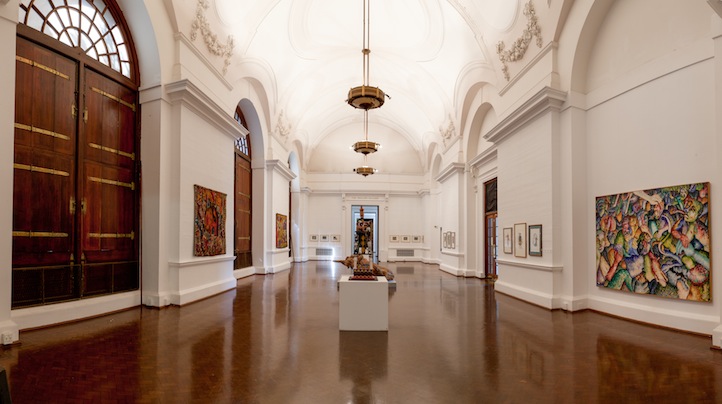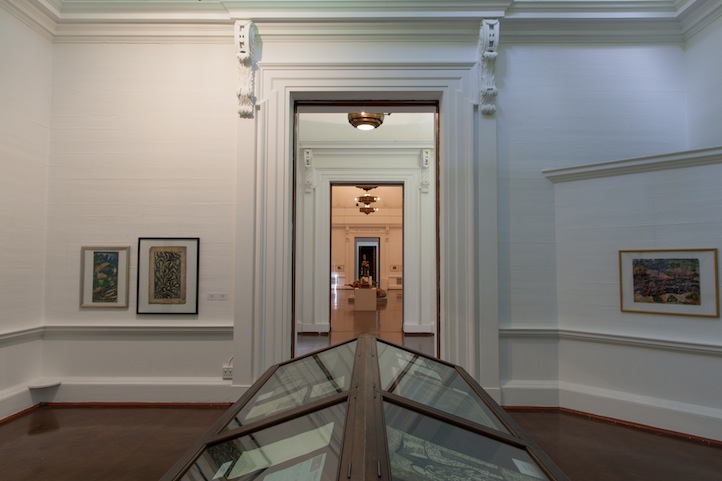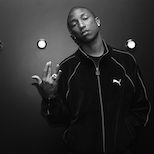Nontobeko Ntombela and The Art of Curating
05.15.2012
ART & DESIGN

As curator of contemporary art at the Johannesburg Art Gallery in South Africa, Nontobeko Ntombela says her role as a curator is one of a collaborator. She specializes in research on South African contemporary arts. Ntombela recently curated the show “A Fragile Archive” reconstructing painter Gladys Mgudlandlu’s 1961 Cape Town exhibition, in which she included works by other South African women artists such as Valerie Desmore, whose work was first exhibited in 1943.
“In the early 1960s Mgudlandlu was acclaimed as South Africa’s first black woman artist. In spite of recent scholarly research that has shown this claim to be inaccurate, it has nonetheless had a significant impact on the way that her art continues to be positioned,” she writes. “Inaccuracies and discrepancies regarding the position of artists such as Mgudlandlu and Desmore are still perpetuated, and this has bearing on the complexities and contradictions of the making and meaning of their archives.” Life + Times spoke to Ntombela about the role of her role in curating these arts.
L+T: What qualities do you look for in the work that you curate?
Nontobeko Ntombela: This is for me always contextual. The answer would be content, relevance, importance and currency. Currency to me does not mean the work is always contemporary, but in relation to art history, and the intent of the curatorial concept, this then determines its currency. This is also not in terms of commercial value. I have no experience working in a commercially driven environment. My curatorial experience has always been in an educational and developmental environment. I am also curious and interested in the alternative, or rather in works that push the boundaries so the speak, hence the interested in the more contemporary works.

L+T: How do you incorporate your community based and cultural interests into your projects?
NN: The ‘how’ would be through the curatorial narrative and exhibition navigation tools used at the time. For the most recent exhibition, there were various things that I considered with regard to the audience participation in the exhibition. These were activated through a number of strategies, text, audio and the obvious placing of work. The cultural interests in a sense are then translated through the framing of the curatorial interest. You may well be aware of the amount of work and cultural interest there is currently in South Africa around the ideas of memory, archive, activation of deserted spaces, redressing an correcting past imbalances. This is the phenomenon that is currently occupying cultural interests particularly in the arts.
L +T: Tell us about “A Fragile Archive Exhibition at JAG.” How did this project come about?
NN: It been a project that I’ve been wanting to do for the last four years. My first interest was based on the socio-political attributes in the works of black women artists. I began with one artist – Gladys Mgudlandlu. Throughout the research I then became fascinated by the idea of the ‘first’ and how that speaks about visibility of black women artist in the South African Art scene.

L +T: Do you favor working with South African artists? What do you think are some of the strengths you see in the work produced in contemporary South African circles?
NN: Yes. Their works are immediate to me. I relate to the medium, context and strategies, because they also speak to the current South African trends. The strengths have to do with context, South African arts, as with arts from other countries, responses to time. The South African political dispensation brought about so much change in the country. This has generated so much more new vocabulary in the arts. Over the years new trends have been set, so that it has extended to becoming a more global vocabulary, which was previously prohibited. Transformation continues and new definitions are being created. At the beginning of democracy there was a great deal of focus artistically on the notion of identity, which was indicative of the changes taking place. Today the definition of identity no longer holds the same description. The articulation of this through artistic mediums has also changed. This I think makes the strength of South African work.
L +T: How do you decide to work with an artist such as the exhibition you curated with Gladys Mgudlandlu?
NN: Mgudlandlu was an impressive personality. She was not only an artist and writer of African folklore, but also an innovative and dedicated teacher. It is a tribute to her and an indication of the love and respect she inspired that to her community, she was always “Gladys the African Queen.”





